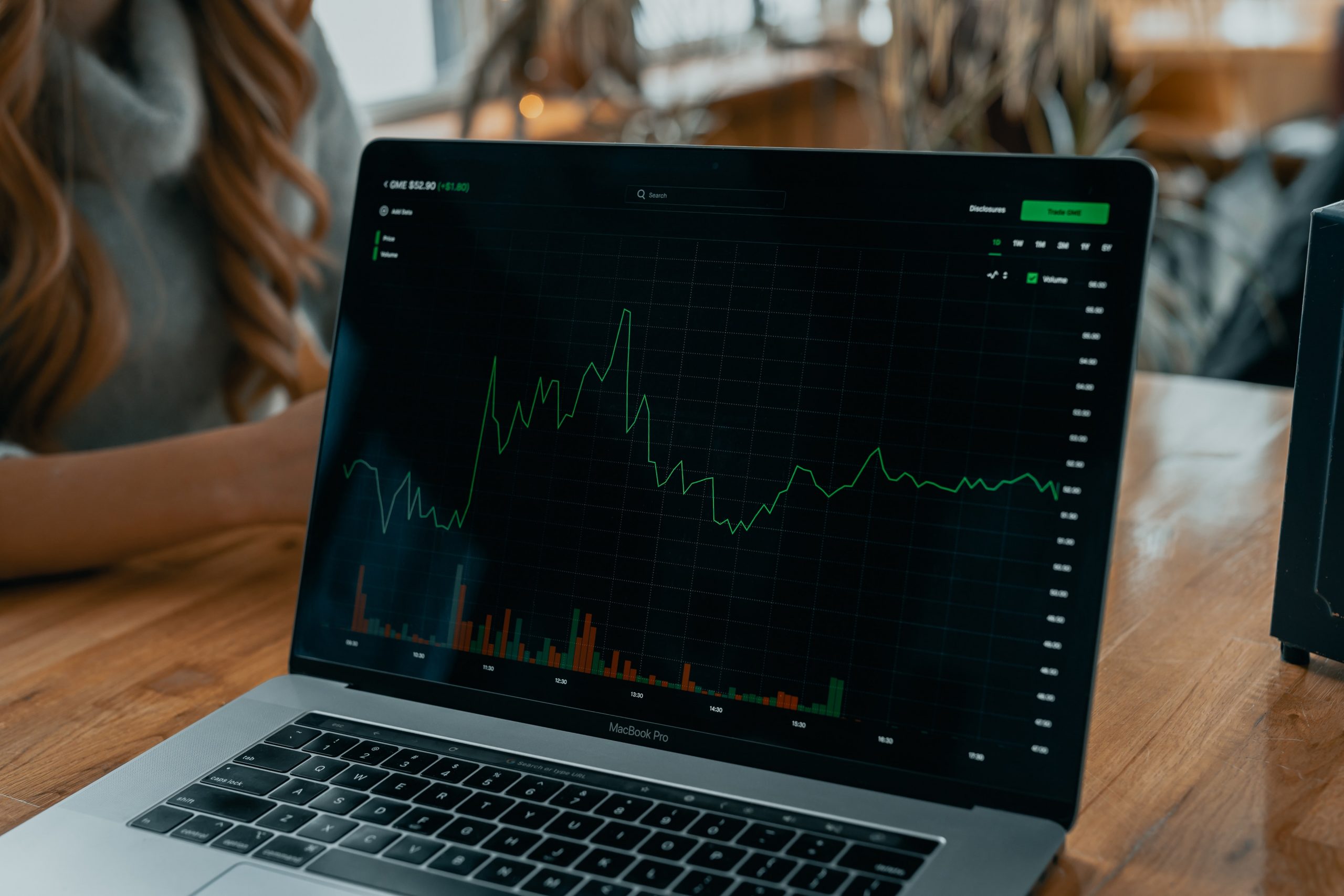So you’ve worked your whole life to build a sizeable, comfortable retirement account. And you’ve finally made it – you’re officially retired. Now comes the fun part – at least, if you’ve done a good job preparing for retirement!
However, retirement also creates much uncertainty for individuals. What will you do with all your free time? How will you stay physically and mentally sharp? And, perhaps most importantly, where to put retirement money after retirement?
If you’re curious about how to invest after retirement, you’ve come to the right place. We’re going to help you navigate this convoluted process so you can feel confident about where to put your retirement money after retirement.
Following our advice will help you preserve as much capital as possible, even through inflation or recession. And, you will even be able to generate additional income with minimal time and effort necessary!
It becomes so much easier when you have access to the best stock analysis app, VectorVest. Our stock trading system helps you get started building a stock portfolio with confidence by telling you where to invest your money, when to buy assets, and when to sell them. Learn more about how the best beginner investment apps can help you below!
Featured Courses:
Is Investing After Retirement Necessary?
Why take the time to learn how to invest retirement money after retirement – after all, you’re already at the finish line, right? Is this necessary?
The answer to this question is, unfortunately, not black and white. It depends on your unique circumstances – primarily, how much money you have saved for retirement & what your anticipated expenses will be.
For example, let’s say John Doe has $500,000 saved up for retirement. He plans to live modestly, in a paid-off home and estimates his annual living expenses to be around $30,000/year. In this case, investing after retirement wouldn’t be necessary. The interest alone from his savings account would cover his living costs without depleting his principal balance.
On the other hand, let’s take a look at Jane Smith’s situation. She also has $500,000 saved for retirement. However, she plans to travel the world and live a more adventurous, luxurious lifestyle. Good for her – she deserves it after 60+ years of working towards this, after all!
But, as a result, her annual living expenses are around $100,000/year. In this case, learning how to invest after retirement would be necessary – otherwise, she would run out of money within just a few years!
Now – even in the case of John Doe, investing after retirement is advantageous. It won’t take much time or effort to allocate capital in a manner that brings in more return than the interest from his savings account.
So, while it may not be necessary, that doesn’t mean it’s not a good idea. Why not let your investments work smarter for you if you can? Let’s get into how to invest after retirement below.
How to Invest Retirement Money After Retirement: Developing Your Strategy for Investing After Retirement
Before we share the best investments after retirement, we want to talk about what you need to think about going into this topic. If you want to invest after retirement, there are typically two goals you might have: capital preservation vs generating additional income.
Capital Preservation
If you focus on capital preservation, you’re simply trying to stretch your retirement savings account as far as possible, holding you over until you die. You have enough saved up, and now, you just need to ensure it lasts.
Sure, you could leave it in your savings account. But to make the most out of it, you can invest it in other low-risk, low-return assets. These will typically lead to better returns than what you’d get in a savings account – but, they aren’t going to generate sizable gains. Investments that fall under this category include bonds or mutual funds. Beyond just preserving your capital, these will serve as great inflation hedging strategies.
Generating Additional Income
Another approach you could take with your strategy for investing after retirement is to generate additional income. The investments you’ll make will be a bit more complex, which means you’ll need to spend more time on them.
They also carry a bit more risk and volatility – but obviously, they have the benefit of providing additional income that can transform your retirement lifestyle.
This is typically the best approach, simply because most retirees don’t actually have enough capital saved up that they can sit back and relax. If you do, then good on you.
But wouldn’t it be nice to explore a bit more, like Jane Smith from the example above? Or, simply live a more comfortable retirement life with less stress?
That’s why we encourage retirees to put at least a portion of their retirement money in assets that generate additional income – like stocks or real estate.
Finding a Balance Between Risk & Reward
Keep in mind, that the actual investments you should make after retirement will be entirely dependent on your unique circumstances. You have your own unique risk tolerance and your own unique retirement goals. We’ll talk about this when we highlight where to put retirement money after retirement shortly.
You also have your own unique amount of capital on hand to invest. Thus, you’ll want to do some additional research after reading these recommendations below to see which of these make the most sense for you. However, you’ll want to find a balance between riskier assets that deliver a high return and safe, reliable assets that preserve your portfolio.
The better you planned for retirement throughout your life, the less risk you’ll have to take on in this new chapter of your life. This is the biggest advantage of investing early for retirement. So, take the time to consider the best retirement investment strategy for your unique needs. You can learn more about the types of investments for retirement in our blog.
Now, with that said, we’re going to share the best investments after retirement to help you either preserve capital or generate additional income. If you’re wondering where to put retirement money after retirement, keep reading!
Where to Put Retirement Money After Retirement: The Best Investments After Retirement
Now that we’ve established that investing after retirement can be beneficial, let’s look at some of the best investments after retirement.
As we mentioned above, we recommend investing your money in areas that deliver enough of a return to not only preserve capital but provide additional profits. And there’s no better investment that meets that criteria than the stock market. Here’s what you need to know…
Stocks
The stock market is one of the best investments for income in retirement, regardless of your age or investing goals. And, it’s especially beneficial if you’re looking for investments after retirement that will help preserve capital and create supplemental income.
There are two main reasons the stock market is such a great investment. First, stocks have outperformed every other asset class over the long term. In fact, from 1928-2018, stocks returned an average of 11% per year. Meanwhile, bonds returned just under 6% percent and cash returned a measly 3% percent.
You can also use the stock market as part of your post-retirement investment strategy no matter your situation, no matter your goals. It’s versatile. You can use the stock market to preserve your capital through safe retirement stocks that provide a steady stream of dividends.
We have a separate guide on how to live off dividends in retirement and blue chip investing in general that we encourage you to read. You can get regular payouts from these companies to support your retirement lifestyle, which is why dividend stocks are worth it. You’ll just need to be aware of how often dividend stocks pay.
Or, learn swing trading or day trading and start bringing extra income to the household on a consistent basis. Unlike long-term investing, these strategies require a bit more time and carry more risk – but you get the potential for much higher profits – a full-time income in some cases!
There are so many different stock investment strategies you can consider, from
Of course, stocks aren’t without their risks. They can be volatile. However, if you diversify your portfolio across multiple companies and industries – which we’ll talk about more later – you can mitigate these risks significantly.
And, more importantly, we’re going to explain how you can enjoy the highest degree of success through the VectorVest system. With the best stock picker, you’ll know exactly what to buy and when to buy and sell stocks so you can enjoy profitable trading while minimizing risk. And, our software is designed for simplicity so even first-time investors can understand it with ease!
We’ll talk more about VectorVest later on. But beyond the stock market, where else can you put your retirement money after you’ve retired? Let’s look at a few more possibilities.
Bonds
While stocks offer significant growth potential, bonds are widely regarded as a safer investment, making them an excellent choice for retirees looking to preserve capital while still generating income.
Bonds, particularly government and high-quality corporate bonds, provide regular interest payments and return the principal upon maturity. This predictable income stream can be a reliable source of funds, helping to cover living expenses without dipping into the principal.
Moreover, bonds can act as a buffer against the volatility of the stock market, offering a more stable investment environment that can be particularly appealing during uncertain economic times.
Real Estate
Perhaps the second most common place to put your money after retirement (after the stock market) is real estate. This is a great option for those looking to generate supplemental income after retirement. You can rent out apartments, houses, office space, storage units – you name it! And, with the help of a property management company, being a landlord can be surprisingly passive.
Of course, there are risks associated with real estate investing as well – and actually purchasing properties isn’t feasible for many. That’s where REITs – or real estate investment trusts – come in.
These are a more accessible means of investing in real estate, as they are essential “stocks” for companies that own or finance income-producing real estate. That means they’re more liquid – which is always an important consideration when investing your capital.
Mutual Funds
Last but not least in terms of where to put retirement money after retirement, you can consider mutual funds. These present another viable option for retirees seeking to diversify their investment portfolios without the need to manage individual stocks or bonds.
By pooling money from many investors, mutual funds enable individuals to invest in a broad portfolio of stocks, bonds, or other securities. This diversification can significantly reduce the risk of losing money and smooth out investment returns.
Furthermore, there are mutual funds designed to meet specific retirement needs, such as funds that focus on generating income or those that aim for capital preservation. You can find the best ETF for retirement or the best retirement income funds in our blog.
Mutual funds can simplify the investment process, providing access to expertly managed portfolios that might otherwise be out of reach for individual investors.
Annuities
Annuities are a popular investment option for retirees looking to secure a stable income stream throughout retirement. An annuity is essentially a financial product sold by insurance companies that can provide a fixed income for life or a set period of time.
They guarantee regular payments. Depending on the type of annuity, you can receive monthly, quarterly, or annual payments, which can be essential for covering living expenses in retirement.
Annuities offer tax-deferred growth, too. You won’t pay taxes on the income and investment gains from your annuity until you start withdrawing money, which can help your retirement savings grow faster.
There are several types of annuities – fixed, variable, and indexed – each catering to different levels of risk tolerance and payout preferences. Fixed annuities provide a guaranteed payout, while variable and indexed annuities offer income that depends on the performance of the market or specific index.
Creating a Balanced Asset Allocation
In terms of where to put retirement money after retirement, you’ll need to consider the ideal retirement asset allocation which varies based on your specific situation.
Key components include equities for growth, bonds for income and stability, and real estate or commodities for inflation protection. Consider your monthly expenses and the total capital you have saved up to get the specific breakdown of each asset.
In general, though, it’s been said that 5-30% should be in cash, bonds should make up 35-50%, and the rest of your portfolio can live in stocks (20-60%).
Understanding Tax Implications
Different assets are taxed differently, with long-term capital gains generally having favorable tax rates compared to other income types.
Understanding how your investments are taxed can help in structuring your portfolio in a tax-efficient manner, potentially saving you money and maximizing your after-tax returns.
Do You Need a Financial Advisor?
One of the biggest questions we see new retirees who are trying to learn how to invest retirement money after retirement ask is…are financial advisors worth it? We recently wrote a guide explaining why you don’t need a financial advisor.
Advisors can offer expert guidance on investment strategies, retirement planning, and tax implications. However, they don’t offer any information you don’t have access to yourself. And given their fees, you may find that the return you get from a financial advisor falls short of expectations.
Removing Emotion From Decision Making
The last piece of advice we want to offer in our guide on how to invest after retirement is to remove emotion from your decision making process.
Emotional investing can lead to impulsive decisions, such as selling during market downturns or buying during euphoric highs, which often results in poor returns.
Implementing a disciplined investment strategy that includes predefined rules for buying and selling can help mitigate emotional responses and maintain a focus on long-term objectives.
Fortunately, there’s a way to completely remove emotion and human error when investing after retirement – that’s where VectorVest comes in.
How VectorVest Helps You Enjoy Simple, Successful Stock Market Investing After Retirement
Now that we’ve outlined the best ways to invest money for retirement, we’re going to explain how VectorVest can help you with investing after retirement. As we mentioned earlier, our stock market analysis software can help simplify how the stock market works.
Even with no prior experience, you can gain a sense of confidence quickly and hit the ground running with a high swing trading success rate – getting your capital working for you quickly.
Whether you want to keep things simple and just let the dividends from dependable, safe stocks roll in or you want to earn some extra money through swing trading strategies – our software will help make your retirement vision a reality. Instead of having to monitor countless stock trading indicators and spend all day in front of your screen, you can be told exactly what to buy, and when to buy it. How easy does that sound?
You’re probably thinking it’s sounding a bit too good to be true. But it’s not. VectorVest has outperformed the market average consistently through our tried-and-true form of stock analysis. Our system simplifies all forms of technical and fundamental analysis into three ratings: relative value (RV), relative safety (RS), and relative timing (RT).
Understanding these ratings is easy, as they sit on a scale of 0.00-2.00 – the closer a figure gravitates to 2.00, the better. These ratings make up the overall VST rating a stock is given. And from there, the system provides investors with a clear buy, sell, or hold rating – for any given stock at any given time.
But it gets better. With our stock picks, you don’t even have to go out and find opportunities – we bring them to you. You can pick the stocks that align with your strategy and goals – whether that be the best blue chip dividend stocks or the best retirement stocks in general, or even stocks with high momentum if you’re following a more active investment strategy. You can find the best aggressive growth stocks, falling stocks to buy, current undervalued stocks, and more.
VectorVest is available with a desktop platform, or you can bring your investments on the go with our stock advisor app. And with this tool in your arsenal, you can enjoy peace of mind as you get started investing after retirement.
To gain a better understanding of how it works, analyze any stock for free! You’ll see why this is the best stock research website quickly.
Where to Put Retirement Money After Retirement – Wrapping Things Up
If you came here wondering where to put retirement money after retirement, we hope this resource helped provide you clarity on your options. You should start by developing your strategy based on your unique circumstances and goals. From there, you can pick the best investments after retirement that align with that specific strategy.
And, no matter what your goals are, the stock market is the best investment after retirement. That’s because it can be used for either capital preservation or generating supplemental income! However, you can also consider bonds, real estate, mutual funds, and other investments we’ve discussed today.
You can learn more about investing after retirement in our blog. We have helpful resources on topics like growth vs value investing, dividend vs growth stocks, investing to retire early, types of retirement investment accounts, how to pick a stock, free stock analysis websites, how to buy the dip, and more.
At this point, it’s time to take action on what we’ve talked about. The longer you wait, the harder you’re making things on yourself – so get started with VectorVest today!
Whether you’re looking for the best stock apps for iPhone or the best stock apps android, our solution is sure to help you navigate retirement investing with confidence and clarity. It won’t eat into your returns like a financial advisor would, either.
Featured Courses:
Featured Courses:
What you should do next…
- Get our latest blogs delivered right to your inbox, subscribe to our newsletter.
- The market moves fast! Get our most current evaluation of this stock with our FREE stock analysis tool.
- Looking for stock picks? Not sure if now is the right time to buy/sell? For a limited time, enjoy the full benefits of a 30-day subscription to VectorVest for only $0.99 (usually up to $148/month) . Get access to our full list of screeners showcasing our top stock picks that tell you exactly what to buy, when to buy, and when to sell.








Leave A Comment